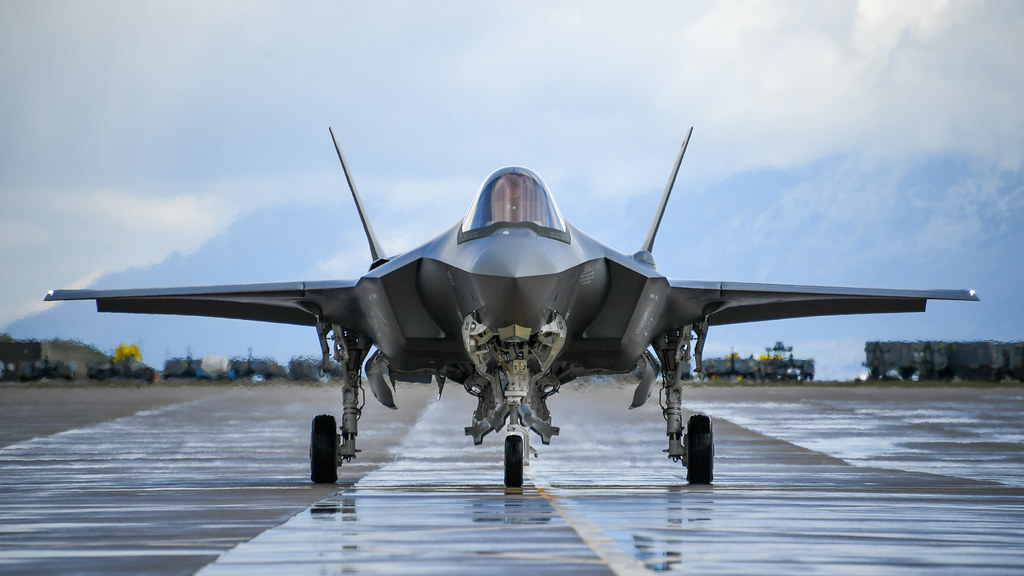
In Switzerland, a nation synonymous with neutrality and fiscal conservatism, significant public and political opposition is mounting against the purchase of 36 Lockheed Martin F-35A Lightning II fighter jets. A recent WatsonActu survey, conducted in early 2025, found that 81% of Swiss citizens oppose the acquisition, with disapproval peaking at 87% in French-speaking regions. A petition calling for the cancellation of the $6.1 billion deal has garnered widespread support, underscoring growing discontent.
This opposition, which has emerged several years after the contract was finalized in September 2022, raises critical questions regarding Switzerland’s evolving defense posture. Despite its historical reluctance to alter its military strategy, Switzerland is now reconsidering a key component of its modernization efforts. This shift can be attributed to a complex blend of national identity, technological concerns, and broader geopolitical dynamics.
Switzerland’s commitment to neutrality, a constitutional cornerstone supported by 96% of its citizens in a 2021 poll, has traditionally shaped its defense policy. Unlike countries with expansive military objectives, Switzerland’s air force is primarily tasked with defensive operations, such as airspace policing. The advanced capabilities of the F-35A, designed for offensive operations and network-centric warfare, appear misaligned with this mission. Critics argue that the fighter’s high-tech features, optimized for large-scale conflict, are unnecessary for a nation focused on territorial defense rather than military projection.
The selection of the F-35 over alternatives like the Dassault Rafale in 2021 sparked significant debate, with detractors labeling it an excessive “Ferrari option” that doesn’t match Switzerland’s modest defense needs. The decision was narrowly approved by 50.1% in a 2020 referendum, driven by technical assessments and political considerations, including Switzerland’s desire to align with NATO-compatible systems despite its non-member status.
The F-35A, developed under the U.S.-led Joint Strike Fighter program, is a fifth-generation stealth aircraft designed for versatility across air-to-air, air-to-ground, and intelligence-gathering roles. With a top speed of Mach 1.6, a combat range of around 1,200 nautical miles, and cutting-edge sensors like the AN/APG-81 radar, the F-35A’s performance is formidable. However, its reliance on complex software and logistics systems, managed by U.S. entities, raises concerns about operational independence—particularly for a country known for its neutrality and self-reliance.
Each F-35 unit is priced at approximately $85 million, with total costs including infrastructure and maintenance pushing the price closer to $150 million per aircraft. Annual maintenance costs have escalated to $6.6 million per unit, significantly exceeding initial projections. This financial burden has fueled skepticism, particularly as the Swiss public questions the value of a fighter jet that may not be suited to its defensive needs.
The F-35’s advanced features, while appealing for modernization, present operational challenges. The jet’s reliance on U.S.-controlled software updates and maintenance processes raises concerns over Swiss sovereignty, with critics warning that such dependence compromises operational autonomy. Additionally, technical difficulties, such as engine reliability and software issues, have plagued the F-35 program globally, with the U.S. fleet experiencing mission-capability rates of just 55% as of 2023.
The debate surrounding the F-35 also exposes broader geopolitical concerns. Switzerland’s historical neutrality is increasingly at odds with the jet’s strategic alignment with NATO and U.S. defense priorities. Although the F-35 was partly chosen to bolster Switzerland’s cooperation with NATO amid rising European security threats, particularly following Russia’s 2022 invasion of Ukraine, many Swiss citizens remain uneasy about closer ties with the U.S.
Critics contend that the F-35’s selection was driven by political and economic pressures, with accusations of bias toward the U.S. option in the procurement process. A 2021 leak suggested that long-term cost projections, rather than immediate affordability or operational needs, influenced the decision. Opponents, including members of the Social Democratic Party and the Green Party, have pushed for a reevaluation, advocating for the Rafale as a more autonomous and cost-effective choice.
The Rafale, a 4.5-generation fighter, offers similar performance metrics to the F-35, including a Mach 1.8 top speed and a 1,000 nautical mile combat radius. Its open-architecture systems and superior operational record, including deployments in Mali and Syria, make it an appealing alternative for Switzerland’s defensive needs.
The ongoing debate reflects wider concerns about Switzerland’s role in an evolving global defense landscape. The F-35’s selection was seen as a way to enhance NATO integration, but Switzerland’s non-aligned status complicates this alignment. Public apprehension about potential shifts in U.S. foreign policy, particularly under a possible second Trump administration, has fueled fears that Switzerland could face greater vulnerability should U.S. support diminish.
The controversy surrounding the F-35 echoes similar concerns in other countries, including Canada, where similar programs have faced domestic resistance. Historically, Switzerland has been cautious about large-scale military spending, as evidenced by the 2014 referendum that rejected a $3.5 billion deal for Saab Gripen E fighters.
This precedent looms large as opposition to the F-35 intensifies. A coalition of activists, including Green Party figures, is pushing for a new referendum to cancel the contract. These critics argue that the F-35 undermines Switzerland’s sovereignty by tying it to a single foreign supplier.
Beyond national concerns, the F-35 program has significant implications for the global arms market. With a projected lifetime cost of $1.58 trillion, the Joint Strike Fighter program is a cornerstone of U.S. defense exports, with over a dozen countries, including Japan, Australia, and the U.K., operating or ordering the jet. A Swiss withdrawal from the program could signal a shift in international defense alliances, particularly in Europe, where initiatives like the European Sky Shield Initiative and the Future Combat Air System (FCAS) being developed by France and Germany seek to reduce dependence on U.S. technology.
As Switzerland navigates its options, three potential scenarios emerge. The government could cancel the F-35 deal, opting instead for the Rafale, strengthening European defense industries while risking diplomatic tension with the U.S. Alternatively, a reduction in the F-35 order could allow for increased investment in other defense priorities. The third option would be to press forward with the acquisition, absorbing the political cost to secure the jets for delivery between 2027 and 2030.
Ultimately, Switzerland’s decision will have far-reaching implications, not only for its national security but for the future of military alliances and global defense markets. The F-35 controversy highlights the delicate balance between technological advancement, national autonomy, and geopolitical alignment in an era marked by uncertainty. The outcome will shape Switzerland’s defense policy for years to come and may set a precedent for other nations grappling with similar dilemmas.




